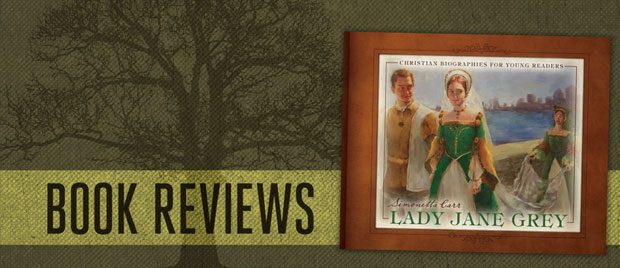Lady Jane Grey

We raise our children in a culture where many contemporary celebrities are famous simply for being famous. There are few celebrities to whom we can point our children as models of what we would like them to emulate. We may do a little better when we turn to history books. There we can show our children men and women of the past whose integrity caused them to stand firm for what was right even when it was costly to do so. But even in children's history textbooks, seldom do we find examples of men and women famous for holding fast to the gospel when they faced hardship and death for their faithfulness.
There is, of course, a great host of such godly men and women from throughout the centuries. It is a company added to daily as believers in the many countries that persecute Christians remain committed to their Savior in spite of threats and violence. Could it ever happen that our own children would find themselves face to face with such persecution?
To know the God of the Bible is to know that every detail of history is under his sovereign control. To know the history of the church (or current events) is to realize that our sovereign God often allows his people to suffer for him. It seems wise to raise our children in the awareness of what Christians in other places and in other times have endured in their commitment to the gospel. This would be one great reason to share Lady Jane Grey with your children. Simonetta Carr, its author, loves history, loves teaching, and loves children (no doubt, not necessarily in that order). This book is the latest in her series Christian Biographies for Young Readers. In the series, Carr is committed to presenting to our children people who are famous—at least in the church, and often beyond—for the most important thing: valuing Christ and the gospel above all else. The fact that Lady Jane was only sixteen when she was called, first, to rule, and then to die makes her life of that much more interest to those who are young themselves.
Another great reason to share this book with your children is that it is both carefully researched (see Carr's acknowledgments at the end of her book) and clearly, simply written in a style appropriate for elementary age children. Attractive artwork is found throughout. Sometimes the artwork comes in the form of a photograph of a famous portrait, place, or artifact. Other times the art is a full-page, color painting of the story's characters and events. This blend of well-told tale and frequent illustrations guarantees the engagement of young readers.
And that's not all. After six chapters of just the right length for school-aged children, we find a "Did You Know?" section with four pages of fascinating details from the time period that both children and adults will enjoy. A one-page time line to help keep straight what happened when in the life of Lady Jane Grey also appears at the end, along with the moving text of Jane Grey's letter to her sister just before she died.
For those who are not familiar with her name, Lady Jane is known as "the Nine-Day Queen." King Henry VIII of England had turned from Roman Catholicism to begin the Church of England. When he died, his son, King Edward VI, a Protestant, succeeded him to the throne. Later, when Edward himself was dying, he named his cousin, Jane Grey, also a Protestant, to take the throne after him. She was just sixteen. However, King Henry had previously named his daughter Mary, a Catholic and famous as "Bloody Mary" for her persecutions, to rule if Edward died. Mary's following was much stronger than Jane's, so Jane's rule lasted only nine days. She was imprisoned, tried for treason, and finally executed before her seventeenth birthday.
Carr doesn't leave us there, though. She briefly looks ahead to the time when a more biblical faith prevailed in England and then, further ahead, to our times and beyond, reminding her readers that God has always preserved both his Word and his church, and always will.